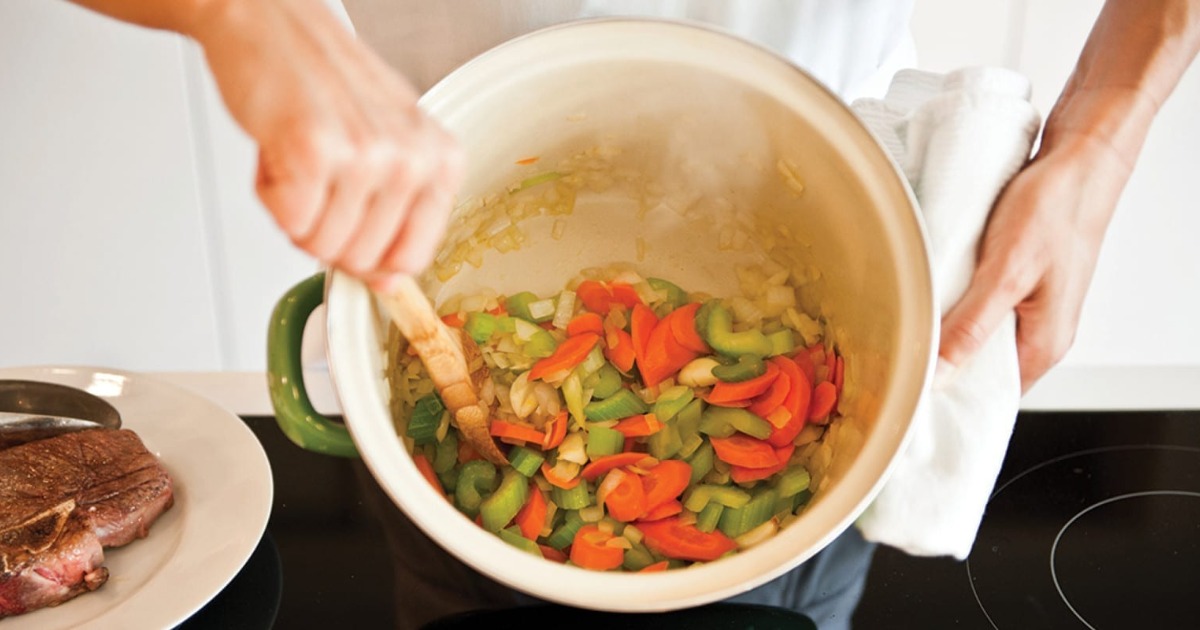The Method to Melt-in-Your-Mouth Meat
To braise or not to braise? Unlike Hamlet’s dilemma, this one’s quite simple. The cut of meat determines whether or not braising is the way to go: if the cut has a lot of connective tissue then braising is the perfect method to render such tougher cuts into delectable melt-in-your-mouth goodness.
Optimal braising meats include any cut around a joint, such as a shank, leg, or part of a bone—osso bucco, for example. Braising uses a dry and wet heat technique. The dry heat occurs when you sear the meat to lock in the flavor. The wet heat takes place when cooking the meat low and slow in liquid. This wet heat step allows the proteins to break down, taking a tough piece of meat and making it “plastic-fork tender” (the meat will fall off the bone with the touch of even a plastic fork).
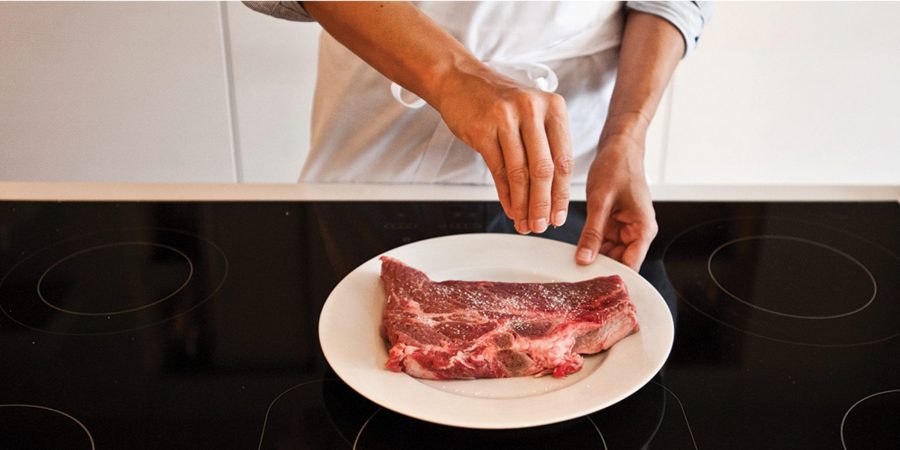
Let meat come to room temperature (about 30 minutes). This allows for a more even sear. Cold meat will cool down your hot pan. Set pan over high heat. Add grapeseed oil. Season meat with salt and sear both sides. Remove meat from pan and turn temperature down to medium.
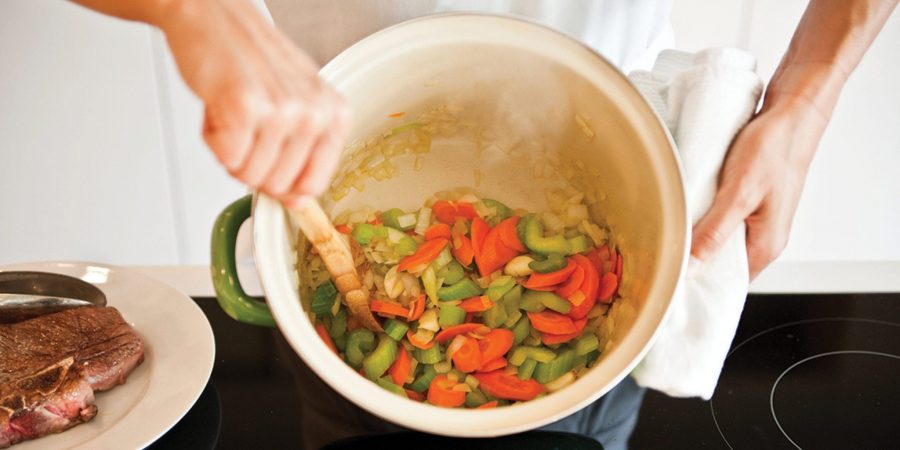
Add a little more grapeseed oil to pan and sauté onions until tender. Add the carrots and celery and sauté until tender. Add garlic and sauté until aromatic.
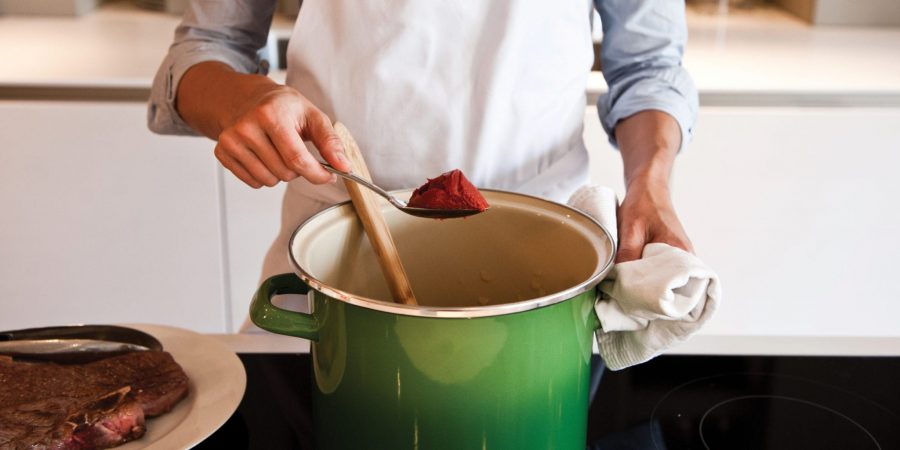
This is a crucial step that is often overlooked. After the mirepoix is tender, add one to two tablespoons of tomato paste and sauté for two more minutes. This step adds a deeper flavor and complexity to the dish.
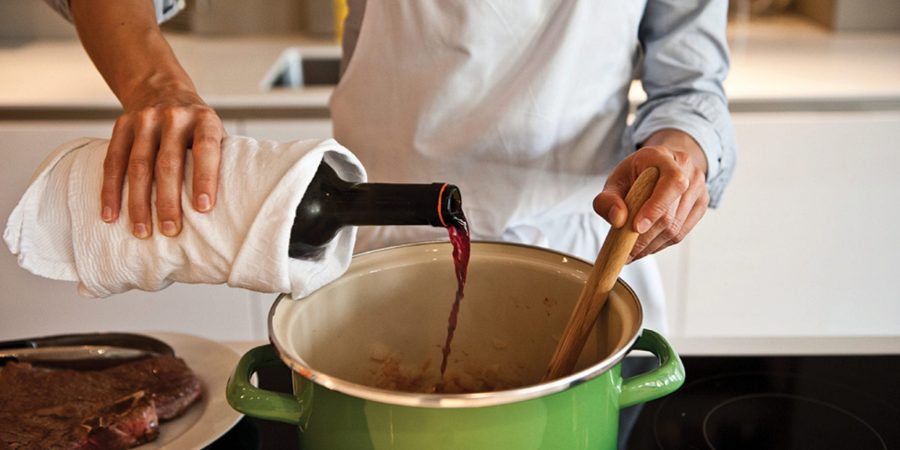
Add wine to the pan, scraping down browned bits. Reduce the wine by half and add meat back to pan.
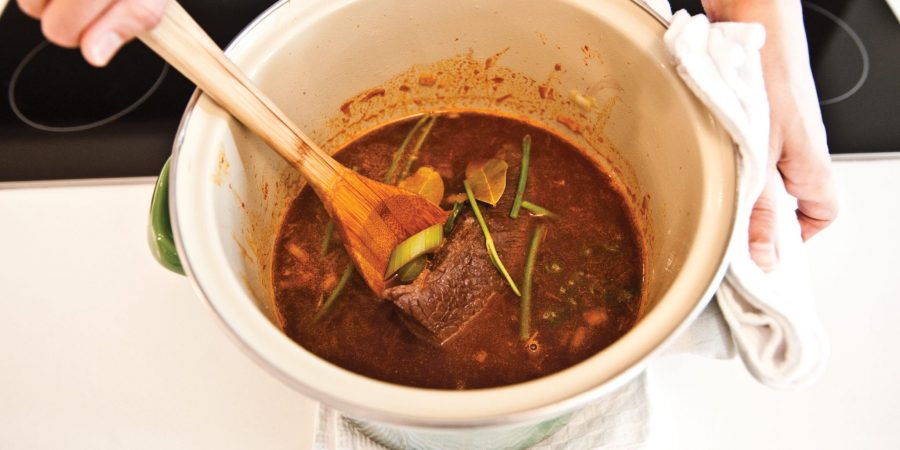
Add beef stock (just enough to cover meat and vegetables), bay leaves, parsley stems, black peppercorns, and thyme to the pan. Do not cover. Braise meat low and slow for 4 to 5 hours or until plastic-fork tender.

Once meat is braised, remove some of the remaining liquid to a sauté pan. Simmer and reduce liquid until it becomes nappé (covers the back of a spoon). Strain away fat or impurities as liquid is reducing. Once sauce is right consistency, turn heat off. Whisk in butter to balance flavor.
THE BENEFITS OF BRAISING
The benefits of braising are threefold.
One It can make an inexpensive cut of meat look elegant and taste delicious.
Two It is perfect for entertaining; since it cannot be overcooked, it’s ready whenever you are.
Three It comes with a finishing sauce included (the reduced braising liquid).
If you find yourself kitchen-bound this winter and you are looking for a hearty dish to keep you warm, look no further than braised meat—your bones (and your taste buds) will thank you for it.
share
trending content
-
Meet the Newest James Beard Award Winners from the South | Listen
by Erin Byers Murray -
The Riff: Caffé Negroni | Video
by Maggie Ward -
The Ultimate South Carolina Dining Guide | Listen
by TLP Editors -
Endless Adventure and Culinary Delights Await in Haywood, North Carolina
-
Summer Adventures Await in West Volusia, Florida
by TLP's Partners
More From At the Table
-
Ready, Set, Boil: A Guide to the Iconic Southern Seafood Boil
-
10 Dad-Approved Recipes for Father’s Day
-
10 Delicious Father’s Day Gifts
-
Burger Bonanza: 5 Sizzling Burger Recipes
-
Two Perfect Pairings for Mother’s Day Morning | Listen












